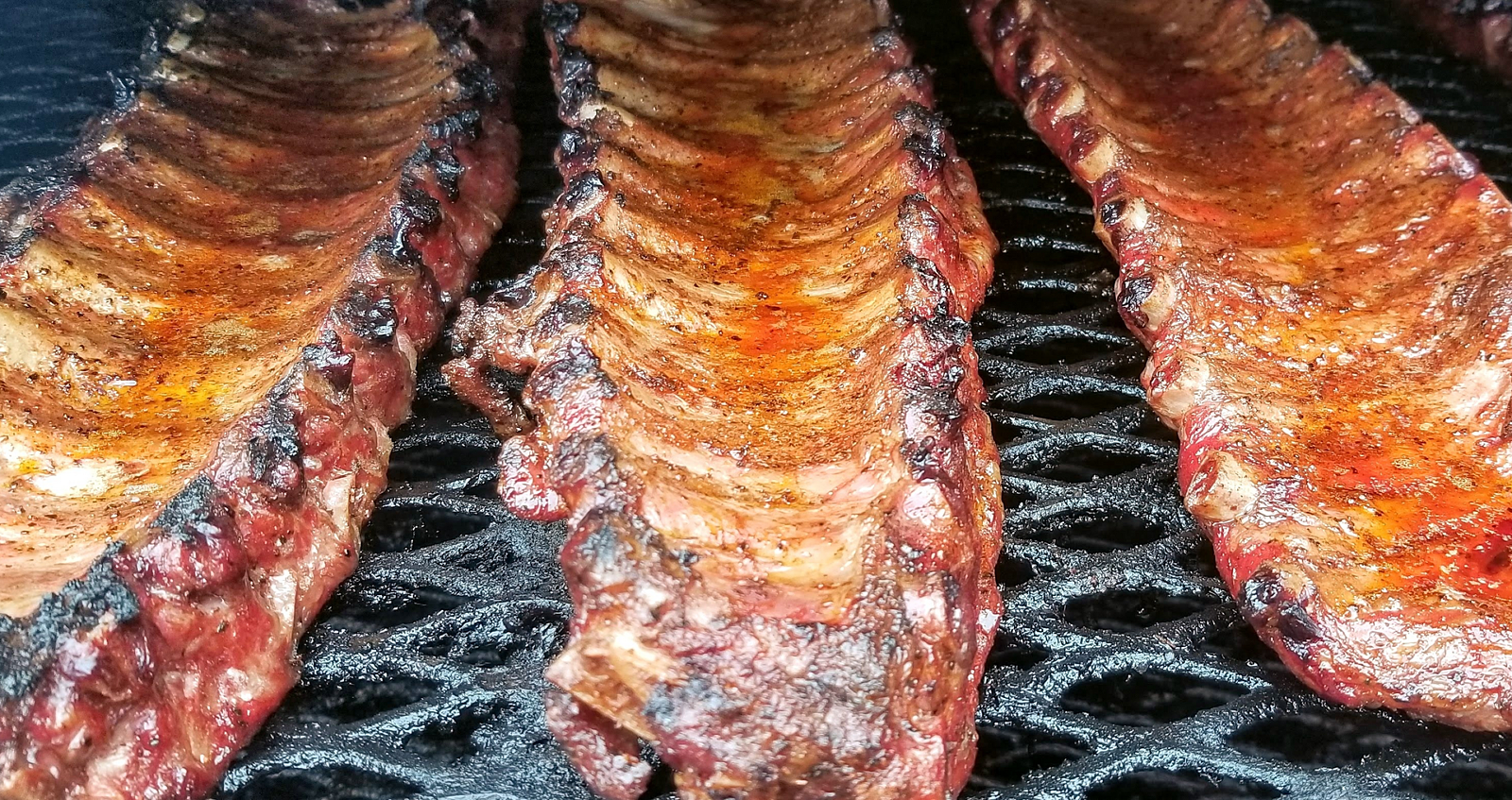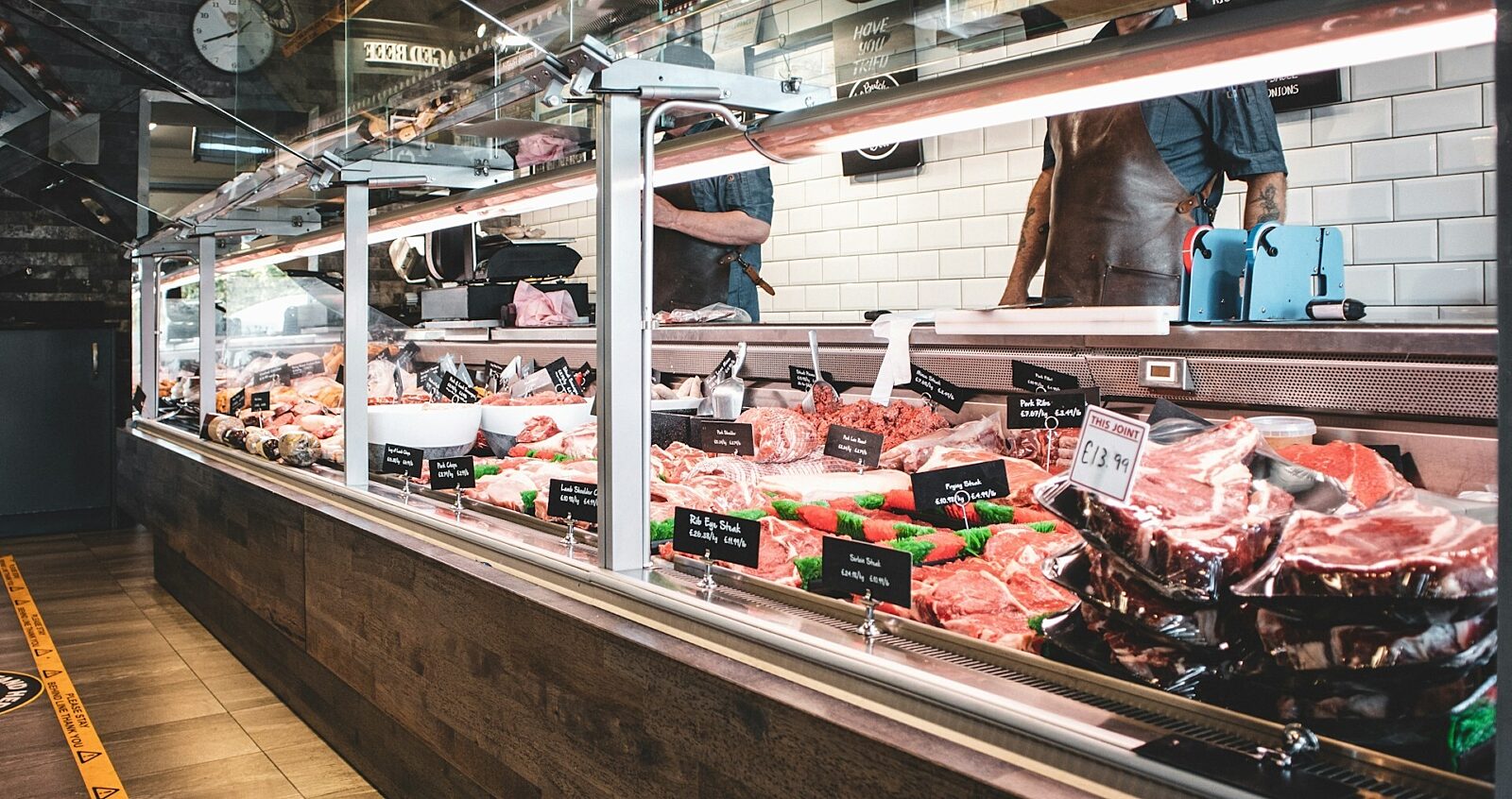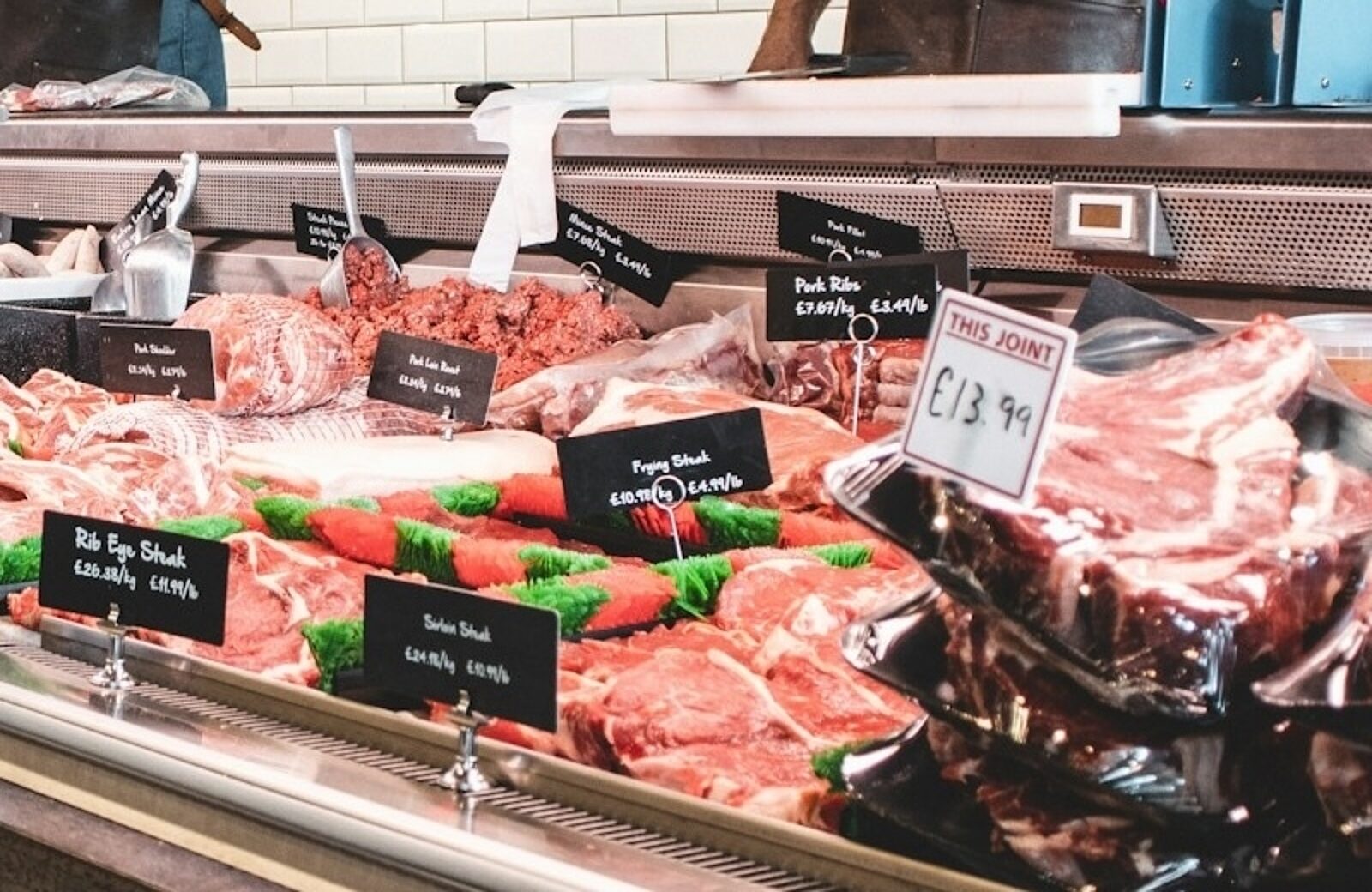
Butcher Shop Trends: Stats and Trends Shaping 2024
From artisanal cuts to tech-driven traceability, uncover the essential butcher shop trends that are reshaping the industry in 2024.

Caroline PriceAuthor
According to recent industry data, 98% of U.S. households buy meat regularly. On average, these households make meat purchases 48 times per year, contributing to a staggering $99 billion in retail revenue — surpassing all other fresh food categories.
This consumer demand underscores the vital role that butcher shops play in the food retail landscape. As of 2023, there are 8,614 meat market businesses in the U.S., marking a 1.1% increase from 2022. This growth reflects the ongoing importance and resilience of specialized meat retailers in the face of competition from supermarkets and online sellers.
As we dig into the latest trends and statistics shaping the butcher shop industry in 2024, it's clear that while traditional meat consumption remains strong, several factors are influencing the industry’s evolution. Consumers are showing greater interest in ethically sourced and traceable options, and artisanal craftsmanship and specialty cuts, specific to smaller butchers, are in high demand.
Let's sharpen our knives and dive into the meaty details of what's shaping the butcher shop landscape in 2024.
The top 10 butcher shop trends in 2024
1. Online meat ordering and delivery
More consumers are shopping for meat online, with 61% of consumers doing so in 2022, compared to 39% in 2019. There has also been a surge in producers shipping meat directly to customers, rising from 9% in 2022 to 25% in 2023.
This digital shift isn't just about convenience; it's reshaping the entire butcher shop experience. While the idea of ordering a prime ribeye with a few taps on your phone might have seemed outlandish a decade ago, it's now becoming the norm for many consumers.
The COVID-19 pandemic catalyzed this trend, but its staying power lies in the convenience and expanded reach it offers both consumers and butchers.
For butcher shops looking to carve out their digital niche, consider these strategies:
Develop an intuitive online platform showcasing your meat selection with high-quality images and detailed descriptions
Implement a robust inventory system that syncs online availability with in-store stock in real-time
Offer subscription services for regular customers, such as monthly "butcher's choice" packages
Provide detailed cooking instructions and recipe suggestions with each online order
By embracing the digital frontier, traditional butcher shops can blend their artisanal expertise with modern convenience, serving up a cutting-edge experience for meat lovers everywhere.
2. Transparency and traceability
In today's meat market, the story behind the steak is becoming as important as the cut itself. A simple "grass-fed" label is no longer sufficient – modern consumers are demanding a full narrative, from pasture to plate. Many customers want to understand the entire lifecycle of their meat, from the animal's diet and living conditions to the butchering and aging processes.
Research done on pork purchasing behavior in 2024 suggests that when consumers trust traceability labels, the proportion of consumers who purchase traceable pork will increase. And, food traceability systems can increase the consumer's trust in food quality.
To meet this demand for transparency, forward-thinking butcher shops are implementing:
QR codes on the packaging that link to detailed product histories
Partnerships with local farms, offering "meet the farmer" events
In-store displays showcasing the shop's sourcing practices and animal welfare standards
Social media campaigns highlighting the journey of specific cuts from pasture to plate
3. Artisanal craftsmanship and specialty cuts
The renaissance of butchery is in full swing, with consumers developing a taste for the extraordinary. IBIS World reports a surge in demand for unique, artisanal cuts like oxtail, lamb ribs, and top-blade steak—items often scarce in supermarkets.
This trend is steering food enthusiasts towards dedicated butcher shops, where they can find these specialty cuts and tap into the butcher's expertise, allowing them to explore a wider range of flavors and textures.
Key aspects of this trend include:
Offering lesser-known cuts that maximize the use of the whole animal
Custom aging processes for premium meats
Signature spice blends and marinades
Collaborations with local chefs to create exclusive products
Beltex Meats in Salt Lake City is a leader in this trend. They focus only on local cuts of meat and using the whole animal – helping reduce waste while also creating interesting and new flavors.
4. Sustainable and ethical meat sourcing
Ethical considerations are reshaping the meat industry landscape.
According to the International Food Information Council, 34% of Americans now prioritize sustainability and ethical practices in their meat purchasing decisions. This significant shift reflects a growing trend where consumers are increasingly mindful of the environmental and ethical implications of their food choices.
This trend encompasses a holistic approach to meat production and consumption, considering environmental impact, animal welfare, and even social responsibility.
Progressive butcher shops are addressing these concerns by:
Partnering with regenerative farms that prioritize soil health and biodiversity
Offering carbon-neutral meat options
Implementing whole-animal butchery to minimize waste
Providing detailed information about animal welfare standards and environmental practices
Supporting local, small-scale farmers to promote sustainable agriculture in the community
5. Plant-based and alternative protein options
Plot twist: not every butchery sells meat. The global market for meat substitutes is expected to grow to $16.78 billion by 2028, and many butcheries are taking note – now offering plant-based alternatives alongside their meat selections. There are even some butcheries that are fully vegan, offering only plant-based products.
This isn't about abandoning tradition, but rather about evolving to meet diverse customer needs and staying relevant in a changing market. Modern butcher shops are recognizing that many customers are seeking to reduce their meat consumption without eliminating it entirely.
The plant-based trend has encouraged traditional meat shops to include a more diverse product mix, reflecting a significant shift in consumer priorities and shopping habits. This is especially true among Gen Z and millennial consumers, who are now purchasing more plant-based products than older generations.
Progressive butcher shops are embracing this trend by:
Offering high-quality plant-based alternatives that complement their meat selection
Creating house-made veggie burgers or sausages using butchery expertise
Providing blended options that combine meat and plant proteins
Educating customers on how to incorporate both animal and plant proteins into their diets
Hosting "Meatless Monday" specials or events to attract a wider customer base
The Herbivorous Butcher in Minneapolis is a fully vegan butcher shop, offering plant-based housemade "meats" and "cheeses" that mimic their animal-based counterparts. This family-owned establishment crafts an array of deli items in-house that cater to vegans, vegetarians, and anyone looking to try something a little bit different.
6. Ready-to-cook and value-added products
The modern butcher shop is no longer just about raw cuts. With time-pressed consumers seeking convenience without compromising on quality, value-added products have become a game-changer.
IBIS World reports that butcher shops and delis are seeing growth through value-added meat products, catering to time-pressed consumers with pre-marinated, pre-seasoned, and unique cuts. These offerings distinguish specialty meat markets from conventional grocery stores, attracting customers seeking convenience and quality despite potentially higher prices.
Today's butcher counters are showcasing:
Marinated and seasoned cuts
Gourmet sausages and burger patties
Stuffed roasts and roulades
Prepared kebabs and stir-fry mixes
Sous-vide ready meats
This trend allows butchers to share their expertise, positioning themselves as culinary partners rather than mere meat suppliers. As we progress through 2024, expect continued innovation in this space, blending traditional butchery with modern culinary trends.
7. Customized meat subscriptions
The subscription model has carved out a significant niche in the butcher shop industry, with the global meat subscription market expected to grow from a valuation of $1.7 billion in 2024 to $7.1 billion by the end of 2034.
This trend caters to consumers who value convenience and consistency, but don't want to sacrifice quality.
Butcher shops are crafting subscription packages that offer:
Curated monthly selections based on customer preferences
Seasonal specialties and limited-edition cuts
Educational content and recipes paired with each delivery
Flexible options for frequency and quantity
Customization for dietary needs or culinary adventurousness
ButcherBox, a certified B-Corp, aims to deliver high-quality meats while also focusing on animal welfare, supporting farmers, and sustainability. And, they’re ranked as one of the best meat subscription boxes by Bon Appetit.
8. Collaboration with local chefs and restaurants
A recent notable trend in the butcher shop industry is the increasing collaboration between butchers and local chefs or restaurants. This partnership creates unique opportunities for both parties and offers consumers access to restaurant-quality meats and specialized products.
Key aspects of this trend include:
Exclusive cuts designed in partnership with local chefs
Butcher shops supplying specialty meats to local restaurants
Pop-up events featuring local chefs at butcher shops
Co-branded products, such as signature spice blends or marinades
Butcher-led meat workshops for restaurant staff
This trend allows butcher shops to tap into the culinary expertise of local chefs, expand their product offerings, and create unique experiences for their customers. It also provides an opportunity for cross-promotion and community building.
For example, Albert Matthews partners with several local restaurants to create exclusive blends and custom cuts for their specific business needs.
9. Nose-to-tail butchery and offal offerings
While prime cuts have always been popular, there's a growing trend towards nose-to-tail butchery and increased interest in offal (organ meats) among adventurous eaters and health-conscious consumers.
The global market for offal and other non-traditional cuts is expected to reach $58.2 billion by 2030.
Butcher shops should consider expanding their offal and alternative cut offerings for the following reasons:
Sustainability: Nose-to-tail butchery reduces waste and aligns with environmentally conscious consumers.
Nutritional value: Many organ meats are nutrient-dense and appeal to health-focused shoppers.
Culinary exploration: Adventurous home cooks and food enthusiasts are seeking new ingredients and flavors.
Cultural diversity: Offal is a staple in many global cuisines, appealing to diverse customer bases.
Cost-effectiveness: Lesser-known cuts often offer better value for budget-conscious consumers.
This trend is reshaping meat cases in butcher shops, with offal and alternative cuts often positioned as both economical and gourmet options.
10. Technology integration for traceability and customer experience
The integration of technology is revolutionizing the butcher shop experience in 2024. The modern butcher shop is carving out a new identity by adopting technologies traditionally associated with restaurants.
Some examples of how butcher shops are using technology include:
Point of Sale (POS) Systems: Modern, cloud-based POS systems are revolutionizing butcher shop operations. These systems not only process transactions but also track inventory management, customer data, and sales analytics, providing valuable insights for business optimization.
Online Ordering and Delivery Platforms: Butcher shops are now offering the convenience of online ordering and delivery, much like restaurants. These platforms can help customers browse cuts, place orders, and schedule pick-ups or deliveries, expanding the shop's reach beyond its physical location.
Inventory Management: Advanced inventory systems can help butchers track every cut from whole animal to individual portion, reducing waste and optimizing pricing. AI-powered inventory management systems can also help predict demand and reduce waste.
Customer Relationship Management (CRM) Systems: CRM tools help butcher shops maintain detailed customer profiles, track preferences, and create targeted marketing campaigns.
Technology is enabling butcher shops to not only streamline their operations but also enhance the customer experience. The key is to balance these technological advancements with the personal touch and expertise that customers expect from their local butcher.
Implement these butcher shop trends today
From artisanal meats and plant-based alternatives to traceability and nose-to-tail butchery, there's a lot happening in the butcher shop industry. So, whether you're hand-cutting prime steaks or an AI is suggesting the perfect roast, remember: the future of butcher shops is here.
Is this article helpful?
DISCLAIMER: This information is provided for general informational purposes only, and publication does not constitute an endorsement. Toast does not warrant the accuracy or completeness of any information, text, graphics, links, or other items contained within this content. Toast does not guarantee you will achieve any specific results if you follow any advice herein. It may be advisable for you to consult with a professional such as a lawyer, accountant, or business advisor for advice specific to your situation.
Read More
Subscribe to On the Line
Sign up to get industry intel, advice, tools, and honest takes from real people tackling their restaurants’ greatest challenges.


